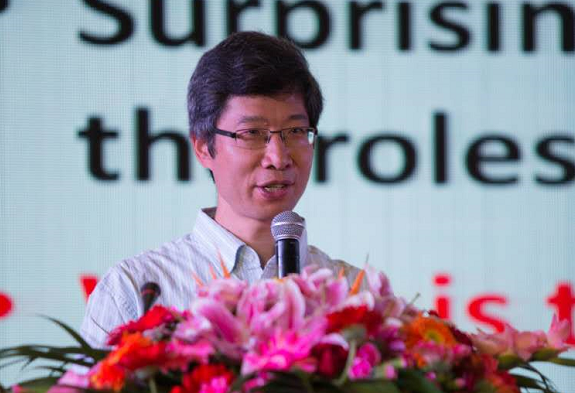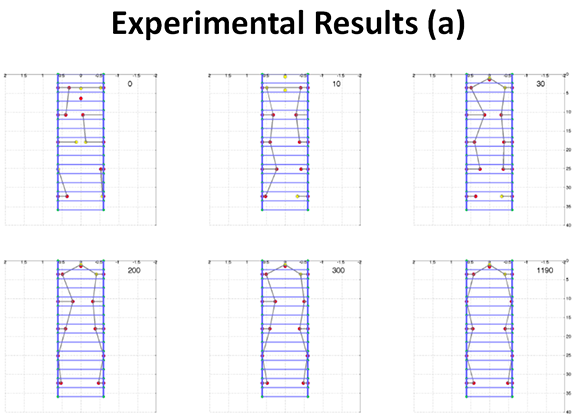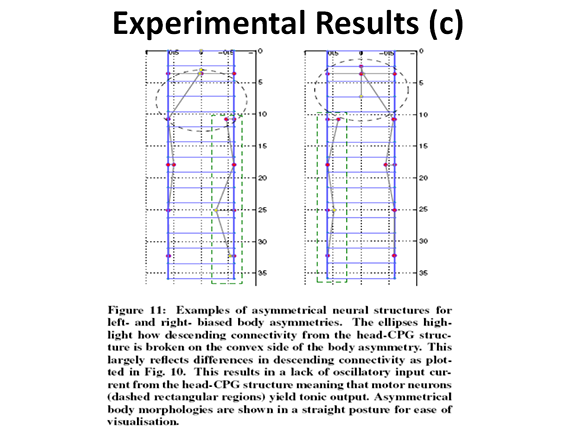Interview with Prof. Yao Xin, a professor at the University of Birmingham in the United Kingdom - The development of computer science has gone a long way from its original intention | AI Technology Review
Foreword
The mystery of the human brain has so far attracted the attention of many scientists. In fact, computers have always been one of the results of this exploration. Although the working principle of computers today has nothing in common with human brains, this is not the intent of their inventors. . At present, computers are an excellent tool for us, but it cannot help us to understand the essence of intelligence. Even the current popular artificial intelligence is far from this goal.
However, some people have already noticed this and started some related research. At the Artificial Intelligence Hunan Forum held in Changsha, Professor of the School of Computer Science at the University of Birmingham, UK, and Yao Xin, Director of the Computational Intelligence and Applied R&D Center at the University of Birmingham in the United Kingdom, mentioned that he was in this field. Some research and reflection. Professor Lei Feng made an exclusive interview with Prof. Yao Yao. During the interview, Prof. Yao Yao introduced the origin, development, and prospects of this class of brain computing.

Lei Fengwang: The topic you are talking about is brain-like computing. We know that there is a similar kind of research called brain intelligence. What is the difference and connection between the two?
Yao Xin: It is still not the same. The study of brain-like computations and concerns is still based on some relatively basic theories. Because brain intelligence is studied from the perspective of brain science and neuroscience, it is a truly fundamental scientific theory, and my research is actually learning some good mechanisms and ideas from them and then exploring how to put them The theory is applied to computer systems.
Lei Fengnet: When did the subject of brain-brain calculation form and how did it form?
Yao Xin: Its formation was originally based on a very simple observation. We have found that the direction of development of computer science is actually not 100% in the direction in which we first hoped for computers. In the early days, at least in China, we all called it a computer. From this name we can see that when we first built computers, we actually wanted to create an artificial system that could work like a human brain. However, over the years, we have found that the computer and the human brain can actually go further and further to a certain extent. For example, if we are now studying computer science, we must first learn programming. Comparing the computer with the human brain, we can find that there is a fundamental difference between the learning ability of the human brain and the learning ability of the computer. Computers are good at some of the more "dead" things, such as calculating a number of data, but many perceiving people are doing particularly fast, such as recognizing human faces or natural language conversations, even if you don't speak Hunan. You may also be able to guess a few sentences by others. So everybody thinks that we should still apply some knowledge from the natural world to computers, so that we have this subject. In fact, the earliest words can be traced back to the fifties and sixties.
Lei Feng network: brain-like computing is mainly to learn from and learn from the brain what?Yao Xin: I still want to learn from the mechanism of the biological brain. By understanding the mechanism of the biological brain, think of ways to turn it into algorithms for computer systems, or to construct more computer systems that are more like human brains.
Lei Feng network (search "Lei Feng Net" public concern) : Artificial neural network is one of its results?Yao Xin: The artificial neural network is a typical example of this, including the fact that there is still a kind of evolutionary algorithm that really learns from the principles of biological evolution and applies it to computers.
Lei Fengwang: You mentioned some brain-like calculations in your speech. Do you have some research on these issues?
Yao Xin: I did some research on computer science in these issues. I have three questions.
The first one is the relationship between the brain and the evolutionary process. It is assumed that we are really interested in brain-like computing. Perhaps we should do further research on the evolutionary process. Otherwise, you will only look at the final result and ignore this process. May miss something.
The second study is that the environment may have a great influence on the design of my brain-like artificial intelligence. You make that system do one thing and do two things. The things you get are different. Or rather, this matter is a static thing or a dynamic thing is not the same. To give a very simple example, whether you say artificial intelligence system or brain-like system or something, it has a carrier. That is, you put it in a computer. This carrier, I think, does not consider too much about pure research. However, in fact, this phenomenon is everywhere in the biological community.
This is also the third point I want to talk about: I think we should also consider the impact of smart carriers on smart systems. All brains have a body. There is no thing in the biology world that has brain and no body, so the combination of the two is also a very interesting study. There is also a lot of inspiration for our future research. For example, should the design of the controller and shape of the shape be considered together when designing the algorithm rather than separate? And now we actually do these two things separately.
Lei Feng Network: Do you think the control system will affect the intelligence?
Yao Xin: Yes, the two should have very close interaction.
Lei Feng Network: In what way? Can you give an example?
Yao Xin: I also talked about this example in my speech. This is one of the directions I am currently studying: evolutionary computing, which has a concept called symbiotic evolution. Or called symbiotic design. That is to say, it is better to introduce a new design method. When designing an artificial intelligence system in the future, it is also necessary to design its carrier. Let's use an intelligent robot to give an example. A well-designed artificial intelligence system should take into consideration what the future shape of the robot will look like when it is designed. Because morphology actually has an effect on smart systems. Now everyone seems to think that the direction of limb control does not have to be taken into consideration. It should be more of a brain. In fact, the two are inseparable.
Prof. Yao Xin gave an example of a nematode in his speech: The nematode's body is a section of one, and it moves through the systolic and diastolic muscles that produce peristalsis. Their team used a computer to simulate a nematode's neural network, and then gave the nematodes an example of moving from one point to another as quickly as possible. First, under this goal, there was no other condition. Nematode's neural network soon formed. A perfect symmetry.

However, Professor Yao later imposed a limit on this nematode in the case of no change in the mission's objective. It stipulated its posture so that it could no longer move as before, and soon the neural network adapted and formed The first state is completely different, as shown in the following figure.

In the case of the limited action of C. elegans, despite the fact that the target of action has not been changed at all, due to changes in the physical state, the model of automatic neural network formation has undergone tremendous changes. This is what Professor Yao Xin wants to demonstrate through this experiment. : The design of intelligent systems needs to take this intelligent carrier into consideration.
Lei Fengwang: That is to say, should design intelligence for what you want this artificial intelligence to do?
Yao Xin: Yes, both should be considered at the same time.
Lei Feng network: You also asked a question - that GM artificial intelligence can be achieved through the stack of single-function modules. What do you think about this issue?Yao Xin: I think we should use the same system to accomplish different tasks. I have given an example to an artificial neural network system. You let it do one thing and let it do many things. In the end, the neural network results you get will be very different. When you let an artificial neural network do something, it doesn't have a modular structure. And if you let a neural network do many things, its modular structure comes out on its own. Through this example, I would like to explain that no matter what kind of system you are going to do. There is a lot to do with what you want this system to do.
Lei Fengwang: Did the modularity of the artificial intelligence you mentioned earlier appear on its own, or did we program it?Yao Xin: I still appeared in this research I did. I did not deliberately design it. I mentioned it in my speech, an example.
Lei Fengwang: We have noticed that the human brain is not very good at digital computing. Why is this?Yao Xin: Actually, I am not an expert in this area. I may be aware of science, or experts in brain science will do more research in this area, but we know this phenomenon.
Lei Feng network: What kind of realm is that kind of brain calculation finally pursued?Yao Xin: Actually there are two general directions. One direction is from the understanding of science, especially experts like brain scientists and cognitive scientists, who are all very interested in the working mechanism of the brain. The brain is essentially a physical structure, a composition of molecular atoms. How does that abstract intelligence appear in it? Everyone wants to know this. This is one of the research directions: understand how it works and understand why it appears in it. The other direction is closely related to computers, scientists and engineers. Now that you have a certain understanding of the mechanism. It also partly understands how the brain works. How do you understand this, abstract it, and turn it into a computing system and an algorithm. This is actually a big challenge, not that everything you understand can be constructed into a better computing structure.
Lei Feng Network: What are the main challenges in this area?Yao Xin: One is that our understanding of brain science is not enough. The other challenge is to turn some of the qualitative concepts we now know into quantitative descriptions. Because it really comes into the computer model, everything must be a quantitative parameter. This is a big problem.
Lei Feng Network: Do you think this goal can help us create a universal artificial intelligence?Yao Xin: We are actually working hard in this area. In fact, everyone now realizes that today's artificial intelligence systems can only do one thing. Playing chess is playing chess. Recognizing an image is identifying the image. There is not a system that can accomplish these two things at the same time. We hope that we can make this kind of system in the future. We also hope to help us to have a more quantifiable and deeper understanding of intelligence by designing and manufacturing such systems.
Lei Feng network: Brain computing will also play a lot of help in this process?
Yao Xin: I think brain-like computing is a very important research direction, because computer research actually comes from two directions. One direction is that we design better systems through human intelligence. This is a top-down design method. Brain-like calculations have a little bit of meaning from bottom to top. What does that mean? It is through observing and understanding some phenomena in the biological world, and then abstracting their features into a computer model. Then we can see what part of the intelligent behavior can be achieved by this computer model. Now computers are really computationally powerful, but computers are not good enough when it comes to perceptions. The study of brain-like computations is very helpful for these advances. If the two can be combined, I believe that these intelligent systems can indeed surpass humans in certain aspects.
AC Contactor switch mainly used for making or breaking circuit at a long distance, suitable for controlling starting\stopping\reversing of AC motor. AC Contactor of korlen conforms to the requirement of IEC60947-4-1& GB14048.4 standards.
Except AC Contactor, there are many different types of low voltage electric appliances, such as Thermal Relay,Manual Motor Startor ,led light, Circuit Breaker, etc.
AC Contactor,Magnetic Contactor,Wafer Style Valve
Wenzhou Korlen Electric Appliances Co., Ltd. , https://www.zjthermalrelay.com